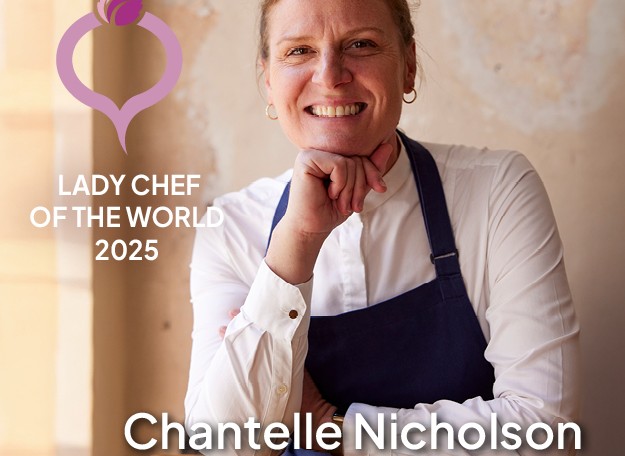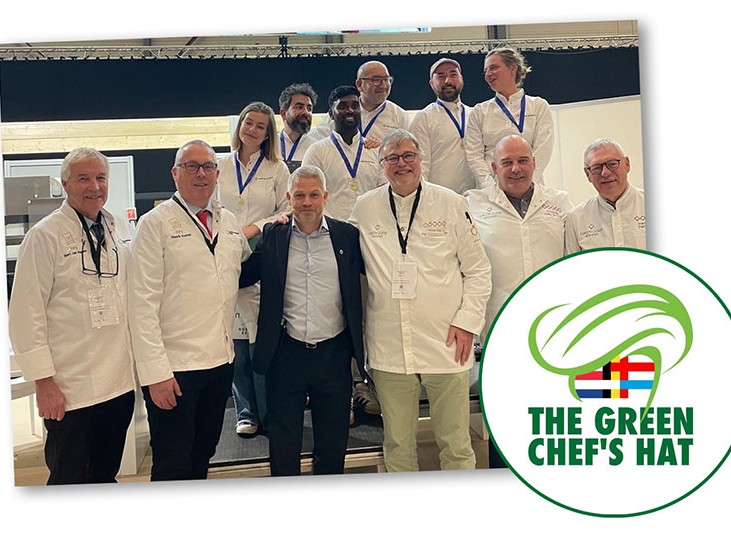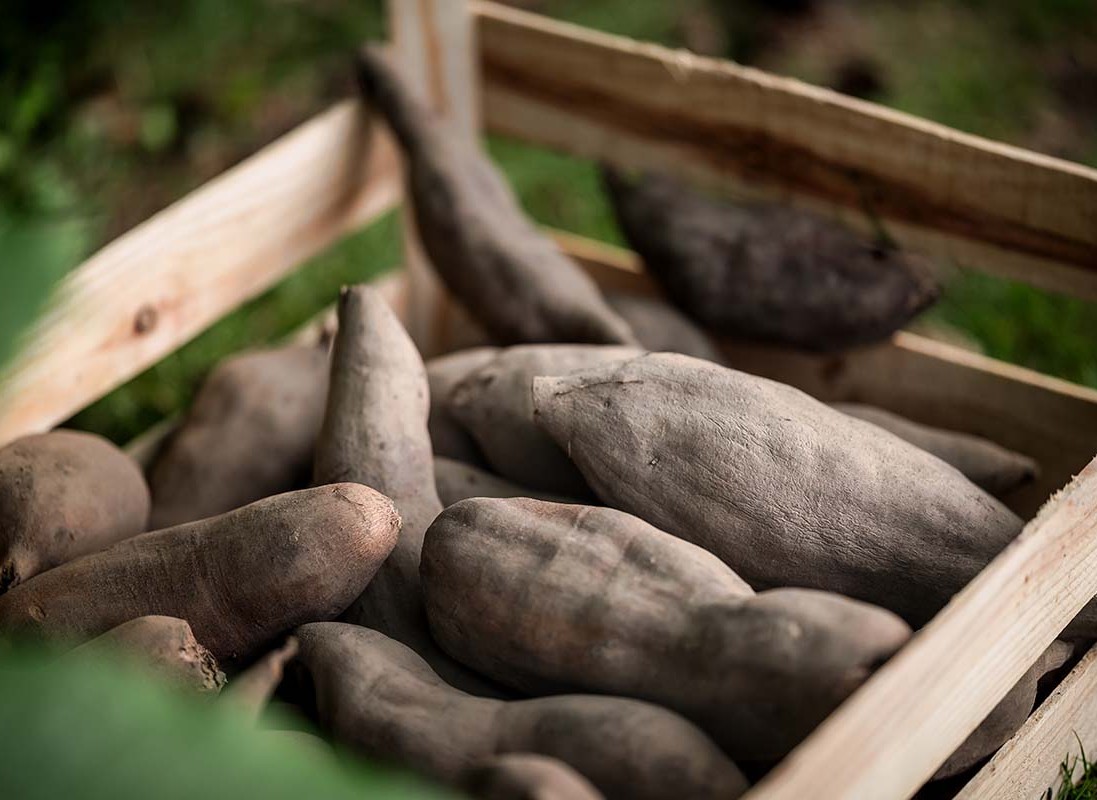Les Cols ( 


 ) in Olot proudly serving five of the humblest local ingredients
) in Olot proudly serving five of the humblest local ingredients
A family dedicated to their fertile volcanic terroir
In our search for restaurants that put pure plants and fruit on a pedestal we wandered into the Spanish volcanic mountains.
The intricate dishes at Les Cols (
) evoke the location where the family's farm has stood for centuries; the volcanic La Garrotxa Natural Park around Olot. They have an Innovation and Development Garden at ten minutes from the restaurant and serve a menu that put the spotlight on five humble -vegetal- ingredients.
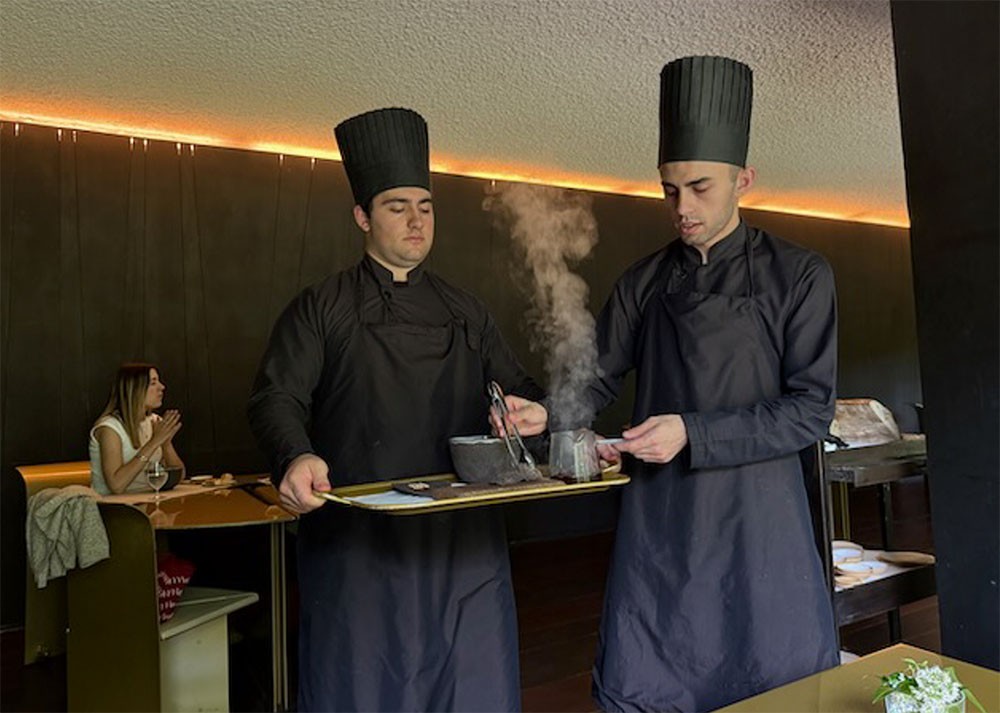
Succes did not come overnight
Chef Fina Puigdevall started a farm-to-fork restaurant in 1990 at age 27 with her husband Manuel Puigvert in her great-grandfather's farmhouse. At the turn of the century, she stopped serving seafood, because the sea - 80 kilometres away - does not fall within her principle of local cooking. Firmly rooted in her volcanic native soil, she dares to think big. She asked a world-renowned architect to completely transform the century-old farmhouse. Puigdevall was declared crazy by locals but rewarded by various culinary institutes. Last year the We’re Smart Green Guide awarded four radishes.
Twenty-five years after opening, their three daughters have joined the business. Daughter Martina is kitchen chef; Carlota is pastry chef and Clara maître sommelier. Four women and a man with one gastronomic philosophy: to embrace the landscape, history and native produce. As sustainable as possible.
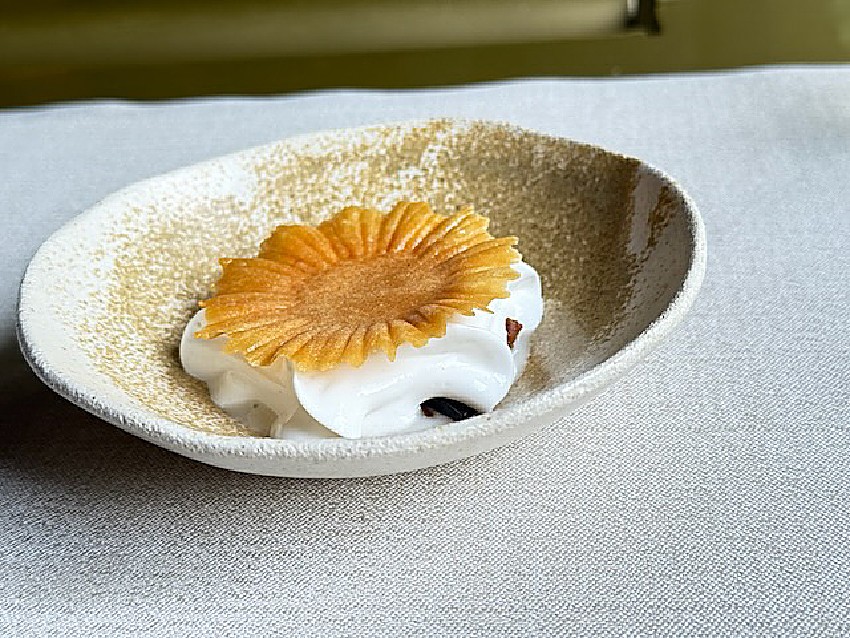
The vegetable garden
The vegetable garden near the restaurant became too small. Located about a ten-minute drive away, there is now the I&D garden, which also serves to inspire and illustrate the story of the chefs' native soil. Guest coming for lunch are invited to visit this organic permaculture garden, with over forty different “beds”. All kinds of colours and shapes, all varieties mixed together. They use a time-honoured way of doing things, also known as regenerative agriculture. Nature is allowed to take its course here: no poison, no ploughing or digging and no fertilizer. The emphasis is on flowers. So, broccoli and mustard seed are not harvested, but left until they bloom. Only local vegetable varieties are grown potatoes, buckwheat, onions, medlars, corn and more. In this circular system, animals are put to work. The mobile chicken run is regularly put somewhere else, so the birds can open up the ground with their beaks and paws all over the plot. The girls lay eggs in thanks for the leftover vegetables that come off the land and the kitchen. When the gardener whistles, a dozen Garrotxa sheep immediately come running: the living lawnmowers of the vegetable garden.

Award-winning architecture in a century-old farmhouse
The restaurant space is slightly below ground level. The tables are by the window. At chest level is the garden where chickens roam. The restaurant is a monument of robust modernism. A magnificent altar to the simple ingredients of this region. The hard metal chairs look uncomfortable at first glance, but the cushions make the seating surprisingly comfortable, even after a few hours. And they need to be, because the lunch consists of about 20 dishes. The wine cellar was built in the former water storage for the horse and cow stables. Besides is the golden hall with a long table with seating for forty and the private dining rooms.

A philosophy centered around the real protagonist: nature
The menu at Les Cols (same for lunch and dinner) is an ode to the garden and the abundance of nature: volcanic soil is very fertile, and the region gets more rain in summer, whilst the winters are dry. Fina Puigdevall is known to say Les Cols can only exist in one place on earth, right here. Fina uses few elements in her cooking; she removes everything that she considers not to be essential without losing the essence. The food is light and made of few ingredients with a focus on the local region’s traditional vegetables and poultry. Let’s look at five of the twenty-five (indeed) dishes on the pure plant menu in June.
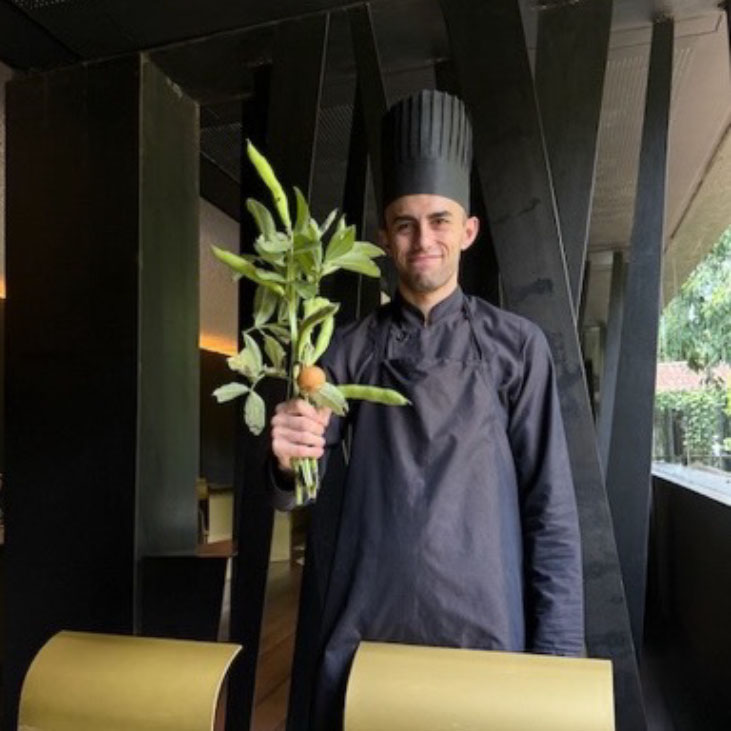 1. A bouquet of fava beans
1. A bouquet of fava beansA young chef comes to the table with a something that looks like a bouquet of budding lilies. At closer inspection you see they are fava bean branches. Sticking out from the centre is a small ring, with a little ball filled with broad bean cream. Seeing the beans in its full glory intensifies the taste experience.
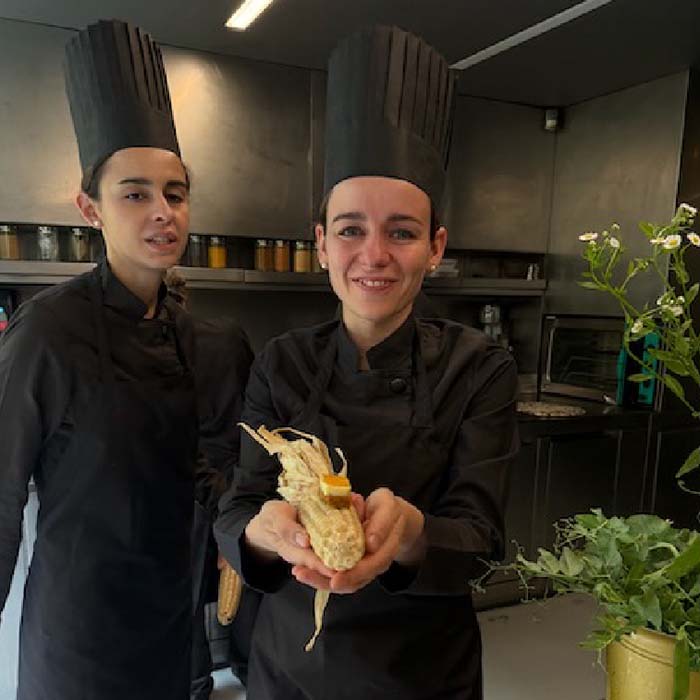 2. & 3. Buckwheat and corn served in the kitchen
2. & 3. Buckwheat and corn served in the kitchenAll guests are invited into the kitchen which looks like a laboratory, with sleek aluminium and square shapes. Here you meet chef Fina and her daughters. Martina Puigvert (Spain's "best young chef" by Michelin in 2024) shows buckwheat and corn and explains how those grains have traditionally fed the people of the Garrotxa but have now fallen out of favor. Straight from the stove, she serves a crisp piece of corn bread, situated on a corn cob. And a buckwheat galette, accompanied by buckwheat beer from a local microbrewer. Brewed especially for Les Cols.
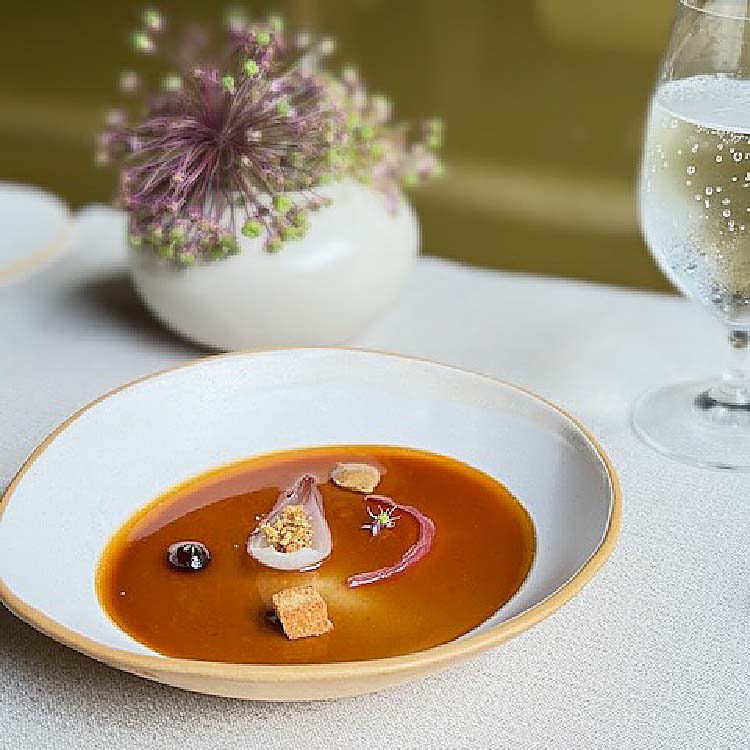 4. Onions fit for a king or a queen
4. Onions fit for a king or a queenIn the French cuisine “a royale” is a classic and elaborate hunting dish with hare and Fois gras and truffle. Les Cols presents an equally moorish and satisfying dish celebrating sweet onion, breadcrumbs and liquorice. Velvety smooth, packed with umami and surprisingly light.
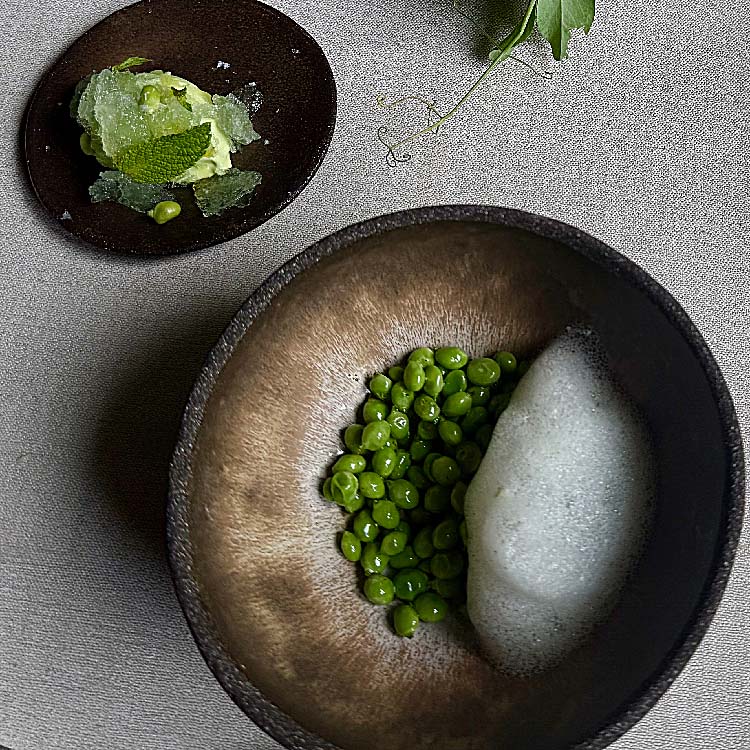 5. Serenade for fresh peas
5. Serenade for fresh peasThe icing on the cake are the fresh peas. Lovingly smoked in the pod on the BBQ. Then "double-peeled" and served all bright green and shiny. Along with it comes a pod containing shiny 'peas,' with lots of mint. It emotes in an unexpected way. This is a love song to the only weeks in June that the gardener can harvest fresh peas.
Committed to food that has not travelled
At Les Cols, you taste what you see, you recognize what you eat. On your plate, you can taste where you are. Old recipes have been dusted off and stripped down to the essentials. The stories of origin and preparation do the rest. This family has built an altar to their native soil and the simple ingredients that mature there. Or to quote Fina Puigdevall: "We are committed to seasonal local products, which we describe as “food that hasn’t travelled”. As a result, we have a large garden that we fertilise with compost, in which we grow organic vegetables as well as native species that are in danger of extinction."

